
Paul Hankar was a Belgian architect and furniture designer, and an innovator in the Art Nouveau style.
Gustave Strauven was a Belgian architect of the Art Nouveau style. He created more than 30 buildings, using new technologies and incorporating wrought iron floral motifs.

Victor Bourgeois was a Belgian architect and urban planner, considered the greatest Belgian modernist architect.

Gabriel Van Dievoet was a Belgian decorator and Liberty style sgraffitist. He was the brother of the architect Henri Van Dievoet.
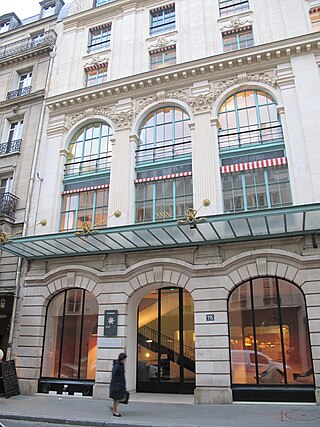
Valode & Pistre is a French architecture firm founded by Denis Valode and Jean Pistre. It has its head office in the 7th arrondissement of Paris, with branches operating for over ten years in Moscow and Beijing,.
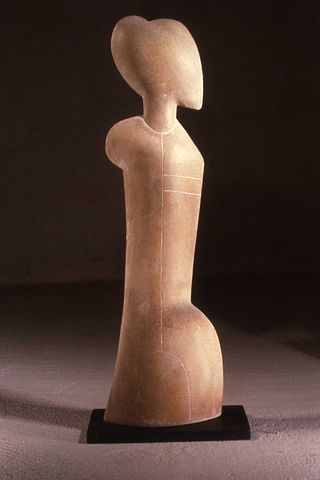
Antoine de Vinck, Baron, was a Belgian ceramist, designer and sculptor.

The Art Nouveau movement of architecture and design first appeared in Brussels, Belgium, in the early 1890s, and quickly spread to France and to the rest of Europe. It began as a reaction against the formal vocabulary of European academic art, eclecticism and historicism of the 19th century, and was based upon an innovative use of new materials, such as iron and glass, to open larger interior spaces and provide maximum light; curving lines such as the whiplash line; and other designs inspired by plants and other natural forms.

The Musée L or Musée universitaire de Louvain, French for: Louvain University Museum, is a Belgian university museum of the University of Louvain (UCLouvain) located in Louvain-la-Neuve, Walloon Brabant, Belgium.

The Aula Magna is a postmodern building of the University of Louvain located in Louvain-la-Neuve, a section of the Belgian city of Ottignies-Louvain-la-Neuve, in Walloon Brabant. It holds one of the country's largest auditoria, with a maximum capacity of 1050 seats, and Wallonia's largest stage. Inaugurated in 2001, the complex was designed by Philippe Samyn.

The Louvain School of Engineering or École polytechnique de Louvain (EPL) is a faculty of the University of Louvain, Belgium, founded in 1864. Known as the Faculty of Applied Sciences prior to 2008, it currently operates on the campuses of Louvain-la-Neuve and UCLouvain Charleroi.
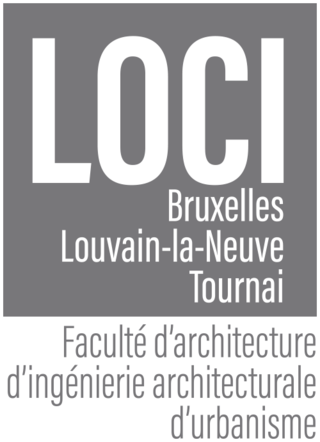
The Faculty of Architecture, Architectural Engineering and Urban Planning, often called LOCI, is the 14th faculty of the University of Louvain, Belgium. It became an independent faculty in 2009, with the merger of three institutes founded between 1867 and 1882, and is active in Brussels (Saint-Gilles), Tournai and Louvain-la-Neuve.
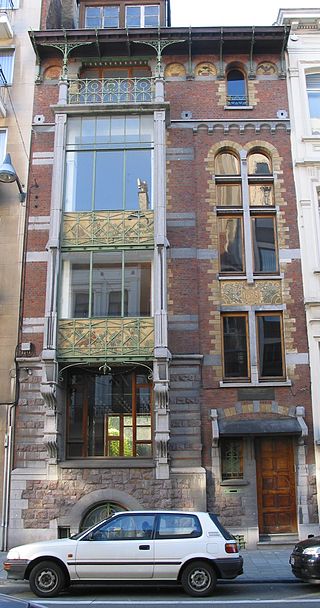
The Hankar House is a historic town house in Brussels, Belgium. It was designed by the architect Paul Hankar, and built in 1893, in Art Nouveau style. It is generally considered one of the first buildings in that style, along with the Hôtel Tassel by Victor Horta, built at the same time, because of its highly innovative plan and its ground-breaking use of materials and decoration.

José López Sallaberry was a Spanish architect and urbanist who worked in the Neoplateresca style.
Willia Menzel was a Belgian artist, primarily a sculptor and graphic designer, associated with the La Cambre group of artists and Cubism. She submitted a work in the Paintings, Drawings and Watercolours section as part of the art competition at the 1928 Summer Olympics.

Jean-Jacques Winders was a Belgian architect.
Jean-Baptiste de Dobbeleer-Dellafaille, born on 22 June 1784 in Brussels and died on 21 December 1868 in Saint-Josse-ten-Noode, was a Belgian architect.

Pierre Culot was a Belgian sculptor and ceramicist.
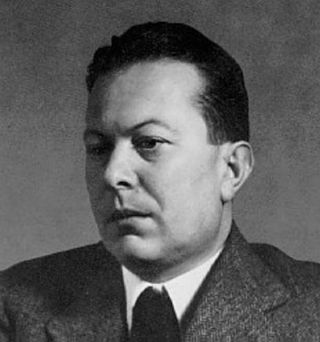
Farkas "Wolfgang" Ferenc Molnár (1897–1945) was a Hungarian architect, painter, essayist, and graphic artist. He is associated with the first generation of Bauhaus movement, and was active in Budapest.

The Saint-Cyr House is a historic town house in Brussels, Belgium. It was designed by the architect Gustave Strauven, and built between 1901 and 1903, in Art Nouveau style. It is Strauven's most important building, and served as a private residence for the painter and decorator George Léonard de Saint-Cyr.
Maria Deroche was a Brazilian-born French architect.















